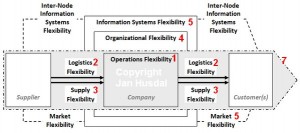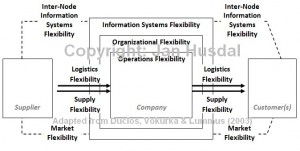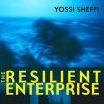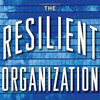 What do you do when you find two research papers by the same three authors, published the same year, in two different journals, with almost the same title? A conceptual model of supply chain flexibility and Supply Chain Flexibility: Building a New Model by Rhonda R Lummus, Leslie K Duclos and Robert J Vokurka were both published in 2003, the latter actually citing the first, but are they in fact the same papers?
What do you do when you find two research papers by the same three authors, published the same year, in two different journals, with almost the same title? A conceptual model of supply chain flexibility and Supply Chain Flexibility: Building a New Model by Rhonda R Lummus, Leslie K Duclos and Robert J Vokurka were both published in 2003, the latter actually citing the first, but are they in fact the same papers?
Same but different
Seemingly yes, they are the same papers, but obviously no, once you have read them. While some parts are indeed “copy and paste”, each paper takes a very different approach and arrives at slightly different conclusions. The model used is the same, with the latter slightly more developed than the first. Both papers belong together and should be read together, since it is the same object of research. While the first can stand on its own, the second depends on the first. In the second paper they also go further in discussing some of literature not mentioned in the first paper. Here I should mention that both papers have – by my counting – 45 same references out of 62 total, while the remaining 17 are different to each paper.
A new all-encompassing concept
The first paper, A conceptual model of supply chain flexibility by Leslie K Duclos, Robert J Vokurka and Rhonda R Lummus, describes what flexibility is about and details the six components that make up the overall supply chain flexibility. As they say,
Previous literature on flexibility fails to consider the cross-functional, cross-business nature of supply chain management. A complete definition of supply chain flexibility components will include the flexibility dimensions required by all the participants in the supply chain.
The figure below is my own interpretation of a figure in their paper. See the original figure here.
Click image for larger version
The article identifies and discusses at length six components of flexibility that must be present in the supply chain for it to be fully flexible.
Operations flexibility (both manufacturing and service) – ability to configure assets and operations to react to emerging customer trends (product changes, volume, mix) at each node of the supply chain.
Market flexibility – ability to mass customize and build close relationships with customers, including designing and modifying new and existing products.
Logistics flexibility – ability to cost effectively receive and deliver product as sources of supply and customers change (customer location changes, globalization, postponement).
Supply flexibility – ability to reconfigure the supply chain, altering the supply of product in line with customer demand.
Organizational flexibility – the ability to align labor force skills to the needs of the supply chain to meet customer service/demand requirements.
Information systems flexibility – the ability to align information system architectures and systems with the changing information needs of the organization as it responds to changing customer demand.
As far as I am able to see, this does account for the whole supply chain.
Dimensions of Supply Chain Flexibility
The second paper, Supply Chain Flexibility: Building a New Model by Rhonda R Lummus, Leslie K Duclos and Robert J Vokurka uses the model developed in the fist paper and expands on it, and shows how the model can be applied in a real world supply chain setting. Six components are reduced to 5 by taking out market flexibility and replacing it with customer satisfaction as a result of a flexible supply chain; in addition, a seventh component is introduced, namely the overall supply chain inventory, consisting of incoming stock, work-in -progress, scrap and waste, and finished goods:
There is a positive relationship between the operations systems characteristics at each node and overall supply chain flexibility (1).
There is a positive relationship between the logistics characteristics within and between each node and supply chain flexibility (2).
There is a positive relationship between the supply network characteristics at each node and supply chain flexibility (3).
There is a positive relationship between the organizational design at each node and supply chain flexibility (4).
There is a positive relationship between the information systems characteristics within and between each nodes and supply chain flexibility (5).
Supply Chain Flexibility will be positively related to increased customer satisfaction (6).
Increased Supply Chain Flexibility will be positively related to reductions in supply chain inventory in terms of inventory value (7).
Interestingly, their model looks very different now, see the original figure here. However, I on the other hand was able to incorporate the changes and the 7 propositions into my figure with only some minor adjustments from my figure above:
 Click image for larger version
Click image for larger version
Personally, I like my version(s) better, but others may disagree. Any comments?
Conclusion
As said above, seemingly yes, they are the same papers, but obviously no, once you have read them. Both research papers add valuable insight to the concept of supply chain flexibility. I for one am beginning to understand that supply chain flexibility is inextricably linked with supply chain risk, and vice versa.
Supply Chain Flexibility vis-a-vis Supply Chain Risk
Supply Chain Risk and Supply Chain Flexibility are two very related subjects. In fact, many renown authors have pointed at flexibility as one of the main mitigation measures when faced with supply chain risk, and they are all listed in my post on De-confusing robustness, resilience, flexibility and agility, where I both separate these terms from each other and try to find where they interface.
Reference
Duclos, L., Vokurka, R., & Lummus, R. (2003). A conceptual model of supply chain flexibility Industrial Management & Data Systems, 103 (6), 446-456 DOI: 10.1108/02635570310480015
Lummus, Rhonda R., Duclos, Leslie K., & Vokurka, Robert J. (2003). Supply Chain Flexibility: Building a New Model Global Journal of Flexible Systems Management, 4 (4), 1-13
Author Links
- linkedin.com: Leslie K Duclos (Leslie Wilson)
- researchgate.net: Rhonda R Lummus
- linkedin.com: Robert J Vokurka













